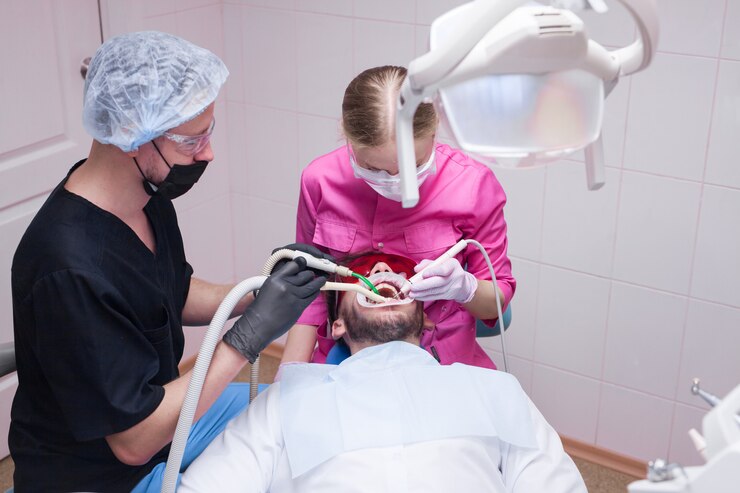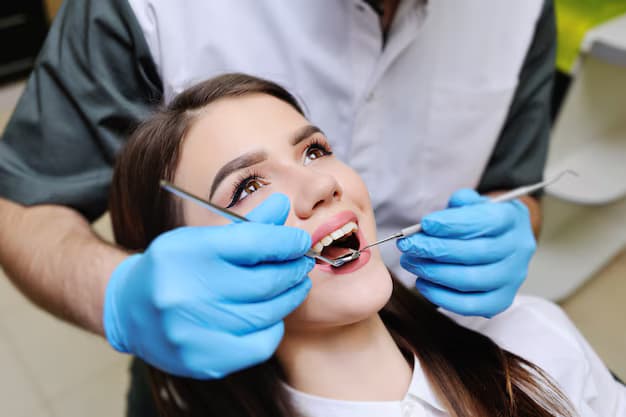Understanding the Stages of Periodontist and How It's Treated

periodontist, often considered the silent destroyer of oral health, is a severe gum infection that damages the soft tissue and, if left untreated, can lead to tooth loss. Understanding the various stages of periodontist essential for effective management and treatment.
This article delves into the intricacies of periodontist, highlighting its stages and the corresponding periodontist treatment options available.
The Initial Stage: Gingivitis
Gingivitis is the earliest stage of gum disease and serves as a precursor to periodontitis. During this stage, inflammation of the gums occurs, often resulting from the accumulation of plaque, a sticky film of bacteria that forms on teeth. Individuals may notice symptoms such as redness, swelling, and bleeding during brushing or flossing. However, despite these warning signs, gingivitis is often reversible with appropriate oral hygiene practices, such as regular brushing and flossing, combined with professional dental cleanings.
At this stage, the body’s immune response is still effective in combating the bacteria, which means that intervention can lead to a complete resolution of the inflammation. Maintaining good oral hygiene is crucial here, as it prevents the progression to more severe stages of periodontitis. Regular dental check-ups are also essential, as a dental professional can provide tailored advice to improve oral health and effectively manage any underlying issues.
Progression to Mild Periodontitis
If gingivitis goes untreated, it can progress to mild periodontitis. This stage is characterised by deeper pockets forming between the teeth and gums as the infection spreads. The bone that supports the teeth may also begin to deteriorate, leading to a loss of attachment between the teeth and gums. While mild periodontitis may not present significant discomfort, it is a critical stage that requires attention.
The treatment for mild periodontitis typically involves non-surgical procedures. Dental professionals often recommend scaling and root planing, a deep cleaning technique that removes plaque and tartar from below the gum line. This treatment helps to eliminate the bacteria that contribute to the infection and promotes healing of the gum tissue. Additionally, patients are encouraged to adopt a more rigorous oral hygiene routine at home to support the healing process. Regular follow-ups with the dentist are necessary to monitor progress and ensure that the condition does not escalate further.
Moving into Moderate Periodontist
As the condition advances, individuals may find themselves facing moderate periodontist. At this stage, the destruction of the supporting structures of the teeth becomes more pronounced. The gum pockets deepen even further, and patients may start experiencing symptoms such as persistent bad breath, changes in bite alignment, and increased sensitivity. The body’s immune system struggles to combat the infection effectively, leading to further loss of tissue and bone.
Treating moderate periodontist often necessitates a more comprehensive approach. In addition to scaling and root planing, dental professionals may recommend antimicrobial treatments to reduce bacterial levels in the mouth. This can involve mouth rinses or localised antibiotics applied directly into the gum pockets. Furthermore, patients may be advised on lifestyle changes, such as smoking cessation and dietary modifications, to enhance their overall oral health and bolster their immune response.
The Severe Stage: Advanced Periodontist
The final and most severe stage of periodontist is advanced periodontist. At this point, the destruction of gum tissue and bone is significant, resulting in tooth mobility and the potential loss of teeth. Patients may experience severe discomfort, and the risk of systemic health issues increases, as periodontal bacteria can enter the bloodstream, affecting overall health.
Treatment for advanced periodontist often involves surgical interventions, as non-surgical methods may no longer suffice. Procedures such as flap surgery, where the gums are lifted back to remove tartar and bacteria, and bone grafts to regenerate lost bone, may be necessary. The goal of these treatments is to restore the health of the gums and teeth and to prevent further complications. Following surgical treatment, patients are typically placed on a rigorous maintenance programme that includes regular cleanings and check-ups to ensure long-term success.
The Importance of Early Detection and Regular Care
Understanding the stages of periodontist underscores the importance of early detection and intervention. Regular dental visits play a pivotal role in identifying gum disease in its initial stages, allowing for timely treatment and preventing progression. Patients should be proactive in their oral health care, incorporating daily brushing and flossing, and being observant of any changes in their gums and teeth.
In addition, educating oneself about the signs and symptoms of gum disease can empower individuals to take charge of their oral health. If any issues arise, such as persistent gum bleeding, sensitivity, or changes in bite, seeking professional advice promptly can lead to more favourable outcomes. Remember, maintaining good oral hygiene is not only beneficial for the mouth but also contributes to overall health and well-being.
Periodontist Treatment: A Holistic Approach
Effective treatment of periodontist goes beyond merely addressing the symptoms; it requires a holistic approach that incorporates lifestyle changes and preventive measures. Dental professionals often emphasise the significance of patient education in understanding the disease process and the importance of maintaining good oral hygiene practices.
Additionally, adjunctive therapies may be introduced, such as the use of laser treatments, which can help in reducing bacterial load and promoting healing in the gum tissue. Nutritional counselling may also be beneficial, as a balanced diet can support the immune system and contribute to overall oral health.
In summary, understanding the stages of periodontitis is crucial for effective treatment and management. From the reversible gingivitis to the severe advanced periodontitis, timely intervention and appropriate treatment can make a significant difference in outcomes. By prioritising oral hygiene, attending regular dental check-ups, and being aware of the signs of gum disease, individuals can safeguard their oral health and prevent the devastating effects of periodontitis.
Note: IndiBlogHub features both user-submitted and editorial content. We do not verify third-party contributions. Read our Disclaimer and Privacy Policyfor details.







